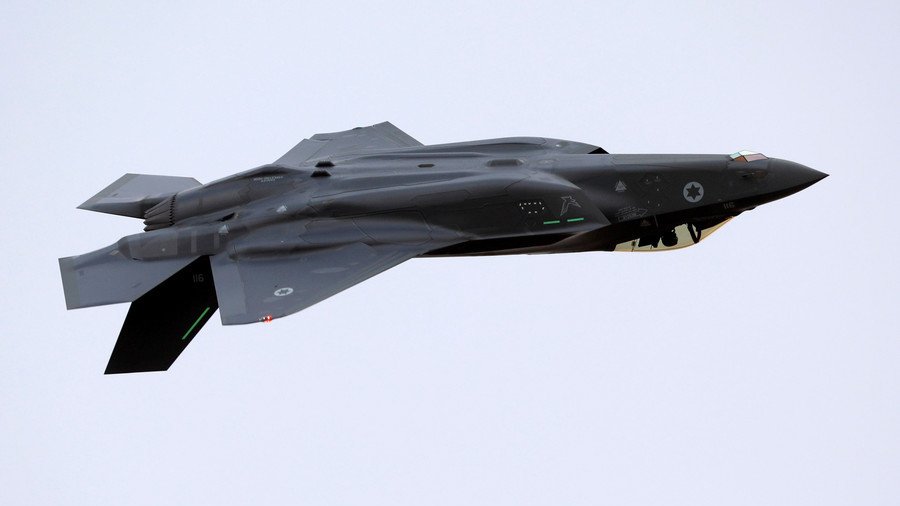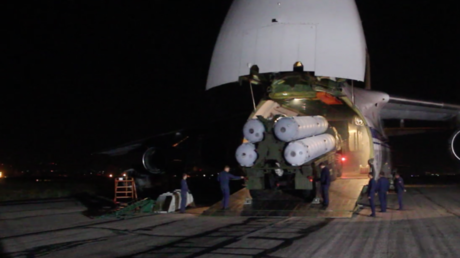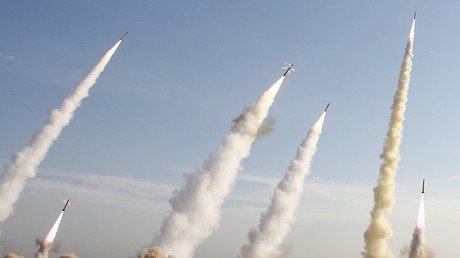‘New reality’? Israel may increasingly use F-35s in Syria raids after Russia’s S-300 delivery

The IAF must increasingly rely on the futuristic stealth capabilities of the troubled F-35 jet if it’s to continue its raids with impunity, after Syria’s air-defenses were boosted with S-300 systems, Israeli army radio reports.
Tel Aviv's self-reserved right to freely strike ‘Iranian targets’ anywhere inside or outside Syria was severely undermined by Moscow’s transfer of S-300 air defense systems and accompanying hardware to Damascus. The surface-to-air interceptors delivered to the Syrian Arab Army, as well as Moscow's resolve to jam the radar, navigation, and communications systems on any aircraft attacking targets in Syria via the Mediterranean coast might complicate missions for Israeli F-15s and F-16s. So, to avert potential threats to their fighter planes, Israel will rely more on the F-35 to carry out its missions in Syria, Galei Tzahal (Army Radio) reported.
“The coming attacks won't be the first, but they will be safer for the pilots in light of the new reality in Syria's skies,” a source within IAF told the radio station, also emphasizing that Israel has every intention to use this “most expensive weapon in the world.”
In recent years, Tel Aviv purchased 50 F-35 units, known in Israel by their Hebrew name, the ‘Adir,’ from Lockheed Martin, at the cost of $125 million each. Eight of the planes have already been transferred to Israel, while 33 more are expected to arrive by 2021, an IAF source said.
Russia’s S-300: Here’s what you need to know about the missile system
According to the technical characteristics of the US-made jets, the active electronically scanned array (AESA) radar system should, in theory, allow the jet to operate undetected inside enemy territory and to evade advanced missile defense systems such as the S-300 by suppressing its signals. Whether or not the F-35’s ‘stealth’ capabilities will be effective in real battle conditions is yet to be seen as, in the past, the aircraft, on top of hundreds of bugs and glitches in its systems, was experiencing radar problems.
READ MORE: Pentagon hiding ‘life-threatening’ F-35 design flaws to meet deadline – watchdog
Russia’s move to secure the Syrian airspace with S-300 complexes follows the downing of the Il-20 reconnaissance plane over Syria by Damascus’ dated air defense system. Moscow pinned the blame for the death of the 15 servicemen on Tel Aviv, asserting that the tragedy occurred because four Israeli F-16 jets used the Russian plane as a cover during an air raid in the Latakia province.
Netanyahu has said Israel will continue to strike Iranian targets in Syria despite Russia's S-300 anti-missile systems pic.twitter.com/zYH8TN3APa
— RT (@RT_com) September 27, 2018
Tel Aviv denied responsibility, shifting the blame on Damascus and Tehran, and stressing that it will continue to strike ‘Iranian targets’ in Syria. Israel, however, pledged to boost coordination between the IDF and the Russian militaries, to avoid any further unfortunate incidents in the Syrian skies.
Like this story? Share it with a friend!















